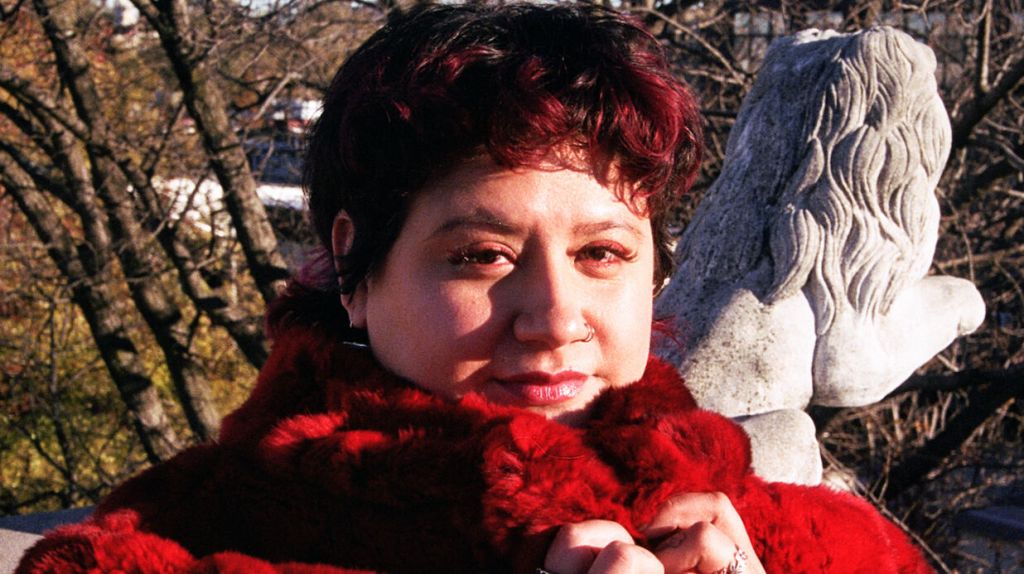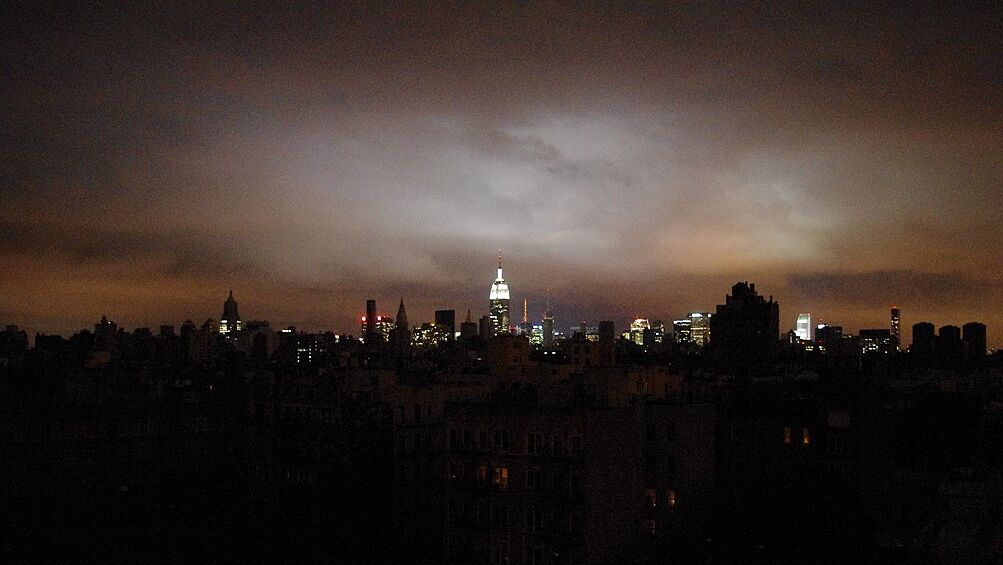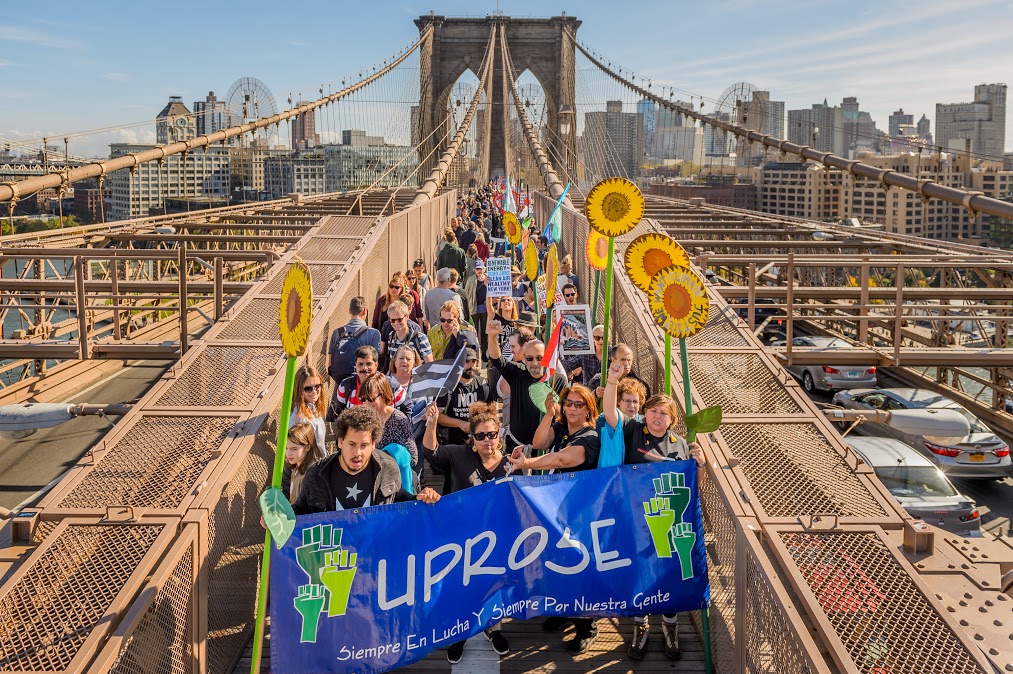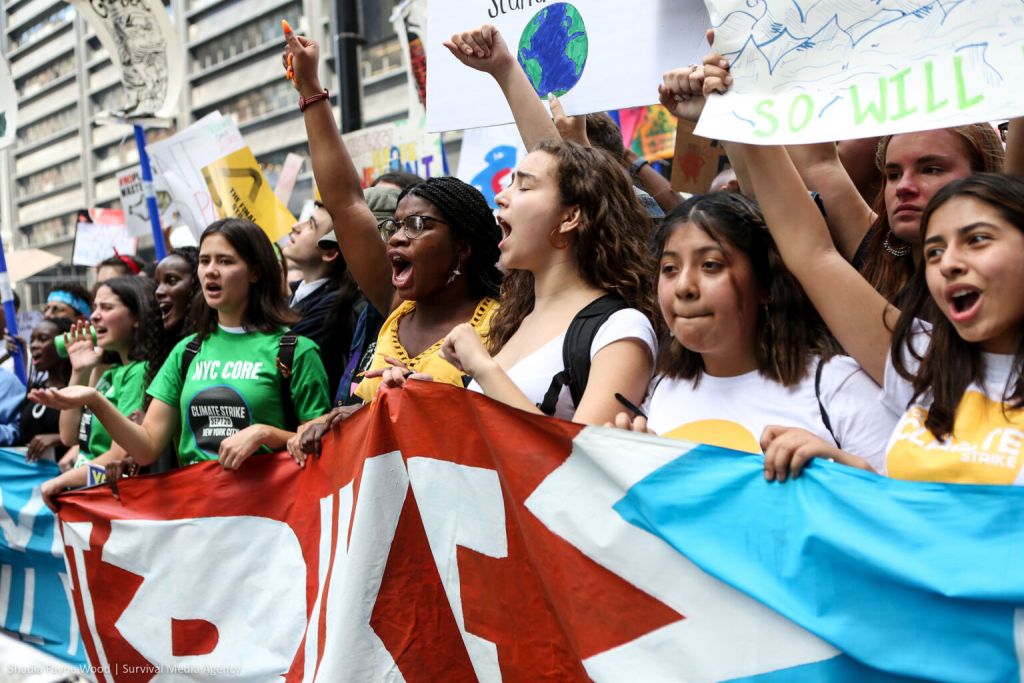Advancing Climate Justice in New York

There was the time before Superstorm Sandy—and the time after. I had known of climate change before the record-breaking storm in 2012, but I hadn’t yet leveled with the gravity of what climate change actually meant. I didn’t know that the climate crisis would exacerbate the inequality society already faces. Superstorm Sandy showed me how.
While I was safe at college up north, Sandy plunged New York City and the surrounding areas underwater. My mom on Long Island lost power for two weeks. In my reading about the superstorm, I learned of “climate justice”—a term that connects climate change to, well, everything: racism, sexism, housing, health, labor, immigration, liberation. Climate justice is a movement that dares to dream of a community-led future where exploitation ends and the revolution begins.
Superstorm Sandy might’ve been my introduction to this world, but climate justice carries a much deeper history in New York City. The movement wasn’t born out of concern for fossil fuel emissions and freak storms, but from the need to keep people safe and healthy. Before there was climate change, there was environmental pollution. For New York City activists, the environment and climate justice are inextricably linked.

The Historical Connection between Environmental Racism and Environmental Activism
When I asked scholar Julie Sze, Ph.D. when environmental activism first started in New York, she didn’t hesitate: at the turn of the 20th century. Sze would know: an American Studies professor at the University of California, Davis, she published a book in 2006 about New York City’s environmental justice movement called Noxious New York: The Racial Politics of Urban Health and Environmental Justice. The book examines the fraught bond between city planning and public health during the 1980s and 1990s in four communities: West Harlem, the South Bronx, and the Brooklyn neighborhoods of Sunset Park and Williamsburg. Through extensive field interviews and deep analysis, Sze places New York City’s environmental activism of that period in a global and historical context, dating back to the sanitation movement of the 1800s.
“That is a long history, but nobody was using the word ‘environment,’” she said.
At the time, communities were concerned with public health issues related to overcrowded housing and sanitation. New York City was growing rapidly, becoming the country’s largest city by 1860. But clean air and water weren’t promised by city planners who developed racist housing policies built upon segregation. As the story often goes in America, Black health advocates had to speak out and push back, especially once tuberculosis became a leading cause of death for their communities. As Sze pointed out, many of these issues are what civil rights activist and sociologist W. E. B. Du Bois examines in his 1899 study, The Philadelphia Negro.
“There were Black activists back then making the same arguments environmental justice activists now make,” Sze said.
Those residents weren’t worried about the birds or the bees, but they were trying to protect the environment. Only they were the ones endangered. It’s that paradigm that drew me into this space and urged me to amplify stories of environmental injustice. The fact that environmental racism and environmental activism have lived on in New York City over a century later pushed me to connect issues long treated as separate.

New York City Leaders in Climate Justice
Brooklyn’s oldest Latine* community-based organization, UPROSE, was born in the reality of having to protect themselves. Founded in 1966 by Puerto Rican activists, the environmental group focuses specifically on its community of Sunset Park, home to a significant number of Latine and Asian immigrants. UPROSE was initially dedicated to supporting the needs of the neighborhood’s growing Puerto Rican population. It has since grown to defend the rights of other groups, too. In the 1990s, under the leadership of executive director Elizabeth Yeampierre, UPROSE evolved to address such health and infrastructure issues as highway construction and air pollution.
“We’re an intergenerational, multiracial, women of color-led organization,” said Sarah Elbakri, UPROSE’s community resilience coordinator.
Nowadays, UPROSE is a national leader in everything environmental, climate, and racial justice. Many years ago, when I met Yeampierre at a dinner, I felt seen. Like me, she grew up speaking Spanish and English at home, raised by parents born somewhere tropical and beautiful. She pulled no punches. I realized the power and necessity of being unapologetic and authentic in a world that often encourages you to be the opposite.
UPROSE is just one leader in New York City’s climate community. WE ACT For Environmental Justice (WE ACT) was founded in 1988 in West Harlem by Black leaders Vernice Miller-Travis, Peggy Shepard, and Chuck Sutton, who organized in response to the newly constructed North River Sewage Treatment Plant that was releasing sickening odors and pollutants. The group sued the city to fix the plant—and won. WE ACT hired its first three staffers with the lawsuit’s settlement funds, and it remains a pioneering force in the movement today, and according to its site is the only environmental justice group with a D.C. office that focuses on federal advocacy and policy.
“You have to have policies at the city, state, and federal level if you’re going to affect what goes on in a community in regard to air and water quality,” said Shepard, WE ACT’s co-founder and executive director. Shepard radiates elegance and commands authority, and her leadership has steered WE ACT to national prominence and impact.
Elizabeth Yeampierre’s Brief But Spectacular Take on Community Resiliency
Elizabeth Yeampierre is an attorney and climate justice leader born and raised in New York City. Asthma and upper respiratory disease have afflicted her family. She is the executive director of UPROSE in Brooklyn. Watch here.
Peggy Shepard, WE ACT Co-Founder
Environmental justice pioneer Peggy Shepard discusses environmental racism and WE ACT’s efforts to protect communities disproportionately impacted by pollution, on MetroFocus. In recent years, studies confirmed that air pollution increases the risk of death from Covid. Watch here.
The Intersection of Environmental Activism and Climate Justice
Despite historic wins, environmental injustice remains the status quo. Black and Latine residents in New York City today continue to face higher rates of asthma compared to other populations, likely a result of their heightened exposure to pollution. Today, sewage plants and highways aren’t the only risk factor for marginalized communities: dirty diesel trucks are additional hazards — as are gas stoves, which emit nitrogen dioxide that can cause chronic lung disease among those who face long-term exposure, a persistent concern for communities of color.
In 2022, WE ACT launched a program in the Bronx to replace gas stoves with induction stoves among 20 households in public housing apartments. The participants were divided into two parts: an experimental group that switched to induction stoves, which don’t require fossil fuels, and a control group that continued to use gas stoves. WE ACT found improved indoor air quality among the 10 households that received the induction stoves while the control group faced continued exposure to gas-stove pollutants.
“It was the first study that was done in low-income apartments,” Shepard said. “All of the [tenants] were saying, ‘We love this induction stove. The food tastes great. The food cooks faster.’ They were very, very happy.”
Fossil fuels were at the heart of another community battle in the Brownsville neighborhood of Brooklyn. In 2017, utility giant National Grid began to construct the North Brooklyn pipeline, a new 7-mile gas line through Brownsville. Many community members realized only in 2020 that the company was making room for the pipeline, which presents a potential risk of a gas leak or explosion. The pipeline also exacerbates the climate crisis through its emissions of methane, a potent greenhouse gas.
“Fracked gas pipelines are walking environmental disasters,” said Fabian Rogers, a member of Brownsville Green Justice, a community organization that has opposed the pipeline’s construction. “The pipeline was designed in a way where it specifically snakes its way through heavily Black and Brown neighborhoods that hold a lot of the culture of Brooklyn.”
The group sued. Its 2021 complaint argues that National Grid has logged over 22,000 gas leaks across its Brooklyn system since 2016. The litigation is ongoing.
Too often, the forces behind the planet’s warming are the same ones harming communities of color in other ways. This is where environmental justice meets climate justice.
At the turn of the century, when New York City was becoming a metropolitan giant, climate change hadn’t yet unleashed superpowered storms or heat waves. Now, many advocates in New York recognize that the climate crisis is worsening the injustices they’ve long faced. They also see the rare opportunity the climate emergency offers: as we transform our energy systems and cut emissions, we can also clean up and cherish communities that have long been relegated as sacrifice zones.
New York can finally leave behind dirty fossil fuels in all their forms: stoves, cars, pipelines.
The Human Cost of Fossil-Fuel Infrastructure in New York City
When I look at the numbers that resulted from Superstorm Sandy, two stand out: 44 killed in the city and $19 billion in damages. I find myself wondering about the people whose life-long scars can’t be measured in numbers: the brave mothers who gave birth in the dark, the grieving children whose parents drowned in their homes.
Since that disaster, city officials have invested in a number of projects meant to prevent such a catastrophe the next time the ocean swells. Coastal flood protection has been a specific focus: sea walls, flood gates, and raised waterside parks are among the ideas. The problem has been implementation. In 2019, New York City set aside $1.9 billion for its East Side Coastal Resiliency project for Manhattan’s Lower East Side, but as of last year, the project’s progress and completion remain distant goals.
“They made some investments after Hurricane Sandy but probably not enough to prepare for what’s coming,” said Ana Baptista, an associate professor of environmental policy at The New School. “There’s still a lot more work to do in terms of climate adaptation in a city that’s surrounded by water.”
That work would include eliminating the city’s fossil fuel infrastructure—like the dirty peaker plants that New York City relies upon when energy demands are high. At a time when oil and gas still make up over 40 percent of New York State’s electricity sources, that work would mean investing in a green economy, through such measures as making Brooklyn’s Sunset Park the State’s offshore wind production hub.
On a deeper level, vast numbers of people in our city are suffering. A record number of unhoused New Yorkers are heading to shelters. Too many families are struggling to find jobs and income. Despite research that demonstrates how prisons and jails are sites of environmental injustice, new jails are being planned in four of five New York City boroughs.
“You can’t really have climate justice until you make a plan for how to reverse that trend,” said Ibrahim Abdul-Matin, an urban strategist who has worked with previous mayors on their sustainability initiatives.
Much has changed for New York City in the last decade, including plans to cut emissions through the passage of a leading climate bill at the state level and a Green New Deal for the city. The federal government has since modeled its own approach to climate and environmental justice after New York’s—but more remains the same.
Just prior to the 10-year anniversary of Superstorm Sandy, people were still dying in their homes from rapidly rising flood waters. In September 2021, Hurricane Ida killed at least 16 people across New York. An estimated 11 New Yorkers drowned in their basement apartments. Nearly all were Asian, a real-time indicator of the racial disparities of climate injustice.
I still dream of a future rooted in climate justice, where the people in charge are the people on the ground. How do we achieve it?
Community-Driven Strategies for Climate Justice

In 2015, WE ACT released the Northern Manhattan Climate Action (NMCA) Plan, a community-driven strategy to improve the community’s ability to manage disasters by investing in renewable energy microgrids and building physical community activist spaces. The New York City Environmental Justice Alliance, in its report, “NYC Climate Justice Agenda 2020: A Critical Decade for Climate, Equity, and Health,” identified three key pathways for creating change: cut greenhouse gas emissions, create well-paying skilled jobs, and connect these efforts to strengthening coastlines and climate adaptation efforts.
If a core theme emerges across the two plans, it is to prioritize community well-being every step of the way.
“For us, leadership is always at the grassroots and community level,” said Lovinia Reynolds, UPROSE’S energy democracy coordinator.
New York City’s leaders won’t quit until climate justice is achieved—when people’s identities and incomes no longer determine whether they live or die.
– By Yessenia Funes | www.yosenia.com
*There are multiple ways to identify Hispanic/Latino people. To be inclusive of nonbinary, gender nonconforming, and trans folks, I will use the gender-neutral Latine. I acknowledge that different community members prefer other names to identify ourselves, including Latin, Latino, Latinx, and Latin@
The WNET Group’s Community Connections column, developed by Community Engagement in partnership with Diversity, Equity & Inclusion, examines issues and ideas of meaning to diverse communities throughout New York City and across the United States.



